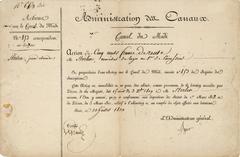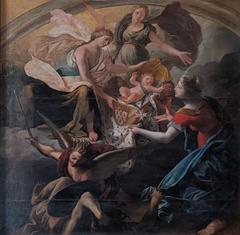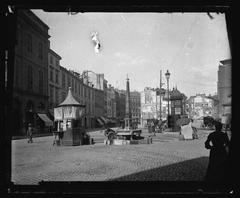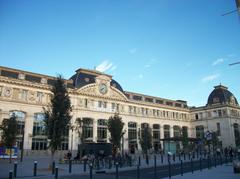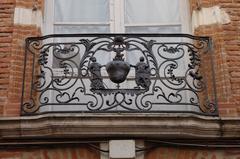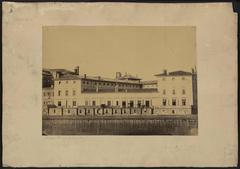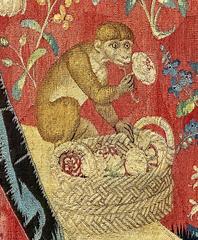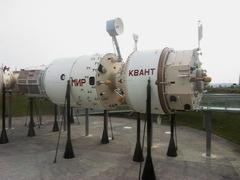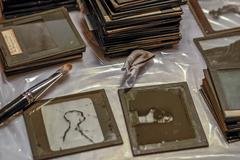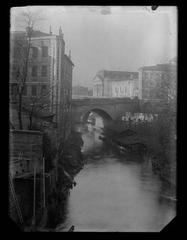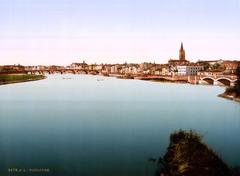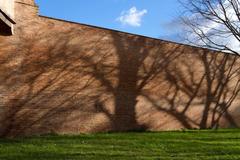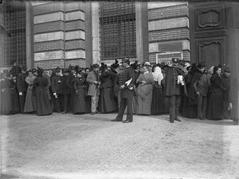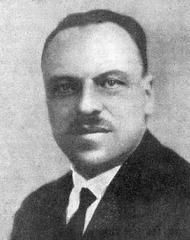Complete Guide to Patte-d’Oie Toulouse: Visiting Hours, Tickets, and Historical Significance
Date: 04/07/2025
Introduction
Patte-d’Oie, nestled in the vibrant western sector of Toulouse, France, is a dynamic neighborhood renowned for its distinctive urban layout, rich history, and cultural vitality. Named for the French term meaning “goose foot,” Patte-d’Oie’s layout features a central roundabout where major avenues radiate outward, symbolizing its longstanding role as a critical junction linking the city’s historic core to the burgeoning western suburbs. Over the years, this strategic location has fostered commerce, transportation, and a strong sense of community.
Developed primarily during the late 19th and early 20th centuries amid Toulouse’s industrial and urban expansion, Patte-d’Oie’s evolution was propelled by infrastructural advancements—including the construction of significant boulevards and the nearby Gare de Toulouse-Saint-Cyprien-Arènes railway station. Its architectural landscape harmoniously blends the iconic pink brick façades emblematic of “La Ville Rose” (the Pink City) with contemporary residential and commercial developments.
Today, Patte-d’Oie is celebrated not only as a transit hub but also as a thriving district brimming with cultural experiences, culinary delights, and community life. The area is highly accessible thanks to Metro Line A and various public transport options, making it an ideal base for exploration. With ongoing urban renewal projects and a strong community spirit, Patte-d’Oie exemplifies the dynamic interplay of tradition and modernity in Toulouse.
This guide offers a comprehensive overview of Patte-d’Oie’s history, visitor information, top attractions, and practical tips—ensuring a rewarding and insightful experience for all travelers. For maps, itineraries, and audio guides, explore resources like the Audiala app to enrich your journey (Discover Patte-d’Oie in Toulouse, Toulouse Tourism).
Table of Contents
- Historical Background of Patte-d’Oie
- Urban Geography
- Visitor Information
- Landmarks and Nearby Attractions
- Community Life and Demographics
- Urban Challenges and Future Prospects
- Frequently Asked Questions (FAQ)
- Plan Your Visit
Historical Background of Patte-d’Oie
Origins and Development
Patte-d’Oie’s name, meaning “goose foot,” aptly describes its iconic roundabout where several main avenues meet. This unique urban feature reflects the neighborhood’s historical importance as a crossroads, facilitating movement and commerce between Toulouse’s city center and its expanding suburbs. Its significant growth began during Toulouse’s industrial era, when the construction of major boulevards such as Avenue de Grande-Bretagne and Avenue Étienne Billières cemented its role as a key transit and residential area. The nearby Garonne River and historic Saint-Cyprien district further enhanced Patte-d’Oie’s connectivity (mapcarta.com).
Historical Significance
While not the site of major medieval events, Patte-d’Oie’s development mirrors Toulouse’s transformation during the industrial age. The neighborhood’s progress was strongly influenced by the expansion of transportation networks, notably the opening of the Gare de Toulouse-Saint-Cyprien-Arènes, which remains vital today. Important civic buildings, such as the Église du Sacré-Cœur de la Patte d’Oie, emerged during this era, reflecting the community’s growth (mapcarta.com).
Urban Renewal and Modern Identity
Recent decades have seen extensive urban renewal in Patte-d’Oie, with the extension of Metro Line A and significant municipal investments in public space, housing, and amenities. While preserving its architectural character—marked by early 20th-century pink brick buildings—the neighborhood has welcomed modern developments and green spaces. Revitalization projects, especially along Avenue de Grande-Bretagne and the Barrière de Bayonne, are part of a broader strategy to enhance the area’s vibrancy and sustainability (metropole.toulouse.fr, beelovedcity.com).
Urban Geography
Location and Boundaries
Patte-d’Oie lies in western Toulouse, adjacent to Saint-Cyprien and within walking distance of the city center. Its defining feature is the Place de la Patte-d’Oie roundabout, from which avenues such as Grande-Bretagne and Étienne Billières radiate. The neighborhood borders Arènes, Bourrassol, and Fer à Cheval, serving as a bridge between the historic core and newer districts (mapcarta.com).
Urban Structure and Land Use
Patte-d’Oie is characterized by a mix of residential, commercial, and institutional spaces. The area ranges from early 20th-century townhouses—showcasing Toulouse’s famous pink brickwork—to contemporary apartment complexes. Commercial activity thrives along main avenues, with shops, bakeries, cafés, and essential services. The neighborhood also features green spaces and proximity to the Garonne River and Prairie des Filtres park (worldtravelguide.net).
Transportation and Accessibility
The neighborhood is exceptionally well-connected:
- Metro: Patte-d’Oie Metro station (Line A) offers quick access to the city center and beyond.
- Bus and Rail: Multiple bus lines and the Gare de Toulouse-Saint-Cyprien-Arènes serve the area.
- Cycling and Walking: The district is pedestrian- and cyclist-friendly, with bike lanes and wide sidewalks (beelovedcity.com).
Visitor Information
Visiting Hours and Accessibility
Patte-d’Oie is a public neighborhood, open year-round with no entrance fees. The Église du Sacré-Cœur de la Patte d’Oie is generally accessible daily from 9:00 AM to 6:00 PM, though hours may vary. The area, including public transport and sidewalks, is wheelchair accessible.
Guided Tours and Travel Tips
While there are no dedicated guided tours exclusive to Patte-d’Oie, it is featured in broader city walking tours that highlight Toulouse’s western districts and architectural evolution. Exploring on foot is highly recommended to appreciate the area’s urban layout, pink brick façades, and vibrant street scenes. For nearby attractions—such as Les Abattoirs or the Stadium de Toulouse—guided tours and events can be booked through their official channels.
Landmarks and Nearby Attractions
- Stadium de Toulouse: Major venue for football and concerts.
- Les Abattoirs: Leading contemporary art museum housed in a repurposed slaughterhouse (cntraveller.com).
- Jardin Raymond VI: Landscaped park adjacent to Les Abattoirs, perfect for relaxation and events.
- Allées Charles de Fitte: Avenue known for its lively markets and brocantes.
- Château d’Eau: Renowned photography museum.
- Saint-Cyprien District: Village-like atmosphere with markets and eclectic shops.
- Pont Neuf: Toulouse’s oldest bridge, stunning when illuminated at night (Taste of Toulouse).
Community Life and Demographics
Patte-d’Oie is home to a diverse community—families, young professionals, students—attracted by its safety, amenities, and accessible location. Community organizations are active in organizing cultural festivals, environmental programs, and educational workshops. The neighborhood’s parks, playgrounds, and sports facilities foster a vibrant local life (beelovedcity.com).
Urban Challenges and Future Prospects
Patte-d’Oie faces typical urban challenges such as development pressure and traffic. The city’s response includes investments in sustainable transportation, expanded green spaces, and the preservation of architectural heritage. Ongoing redevelopment aims to further enhance connectivity and quality of life (metropole.toulouse.fr).
Frequently Asked Questions (FAQ)
Q: What are the visiting hours for Patte-d’Oie?
A: The neighborhood is accessible 24/7. The Église du Sacré-Cœur is typically open 9:00 AM–6:00 PM daily.
Q: Is there an entrance fee or ticket required?
A: No, public areas are free. Cultural venues may have their own ticketing policies.
Q: How do I get there via public transport?
A: Take Metro Line A to Patte-d’Oie, or use bus lines and trains from the nearby Gare de Toulouse-Saint-Cyprien-Arènes.
Q: Are guided tours available?
A: Patte-d’Oie is included in some city walking tours; dedicated tours can be arranged through local operators.
Q: Is the neighborhood accessible to wheelchair users?
A: Yes, with adapted facilities throughout most public spaces and metro stations.
Q: What are the best nearby attractions?
A: Les Abattoirs, Jardin Raymond VI, Allées Charles de Fitte, Saint-Cyprien, and the Garonne riverbanks.
Plan Your Visit and Stay Connected
Patte-d’Oie offers a compelling blend of Toulouse’s historical heritage and modern urban life. For the best experience:
- Download the Audiala app for maps, itineraries, and audio guides.
- Check official tourism sites for current events and opening hours.
- Explore on foot or by bike, and take advantage of public transport for easy access to the city’s highlights.
Image Suggestions (with Alt Text)
- Place de la Patte-d’Oie roundabout: “Aerial view of Place de la Patte-d’Oie roundabout in Toulouse showing radiating avenues.”
- Église du Sacré-Cœur de la Patte d’Oie: “Église du Sacré-Cœur de la Patte d’Oie church exterior in Toulouse.”
- Pink brick buildings: “Pink brick townhouses in Patte-d’Oie neighborhood, Toulouse.”
- Metro station entrance: “Entrance to Patte-d’Oie Metro station on Toulouse Metro Line A.”
- Les Abattoirs Museum: “Les Abattoirs Museum entrance in Patte-D’Oie, Toulouse.”
- Jardin Raymond VI: “Panoramic view of Jardin Raymond VI overlooking the Garonne River.”
- Street art: “Colorful street art mural in Patte-D’Oie neighborhood.”
- Allées Charles de Fitte market: “Vibrant market at Allées Charles de Fitte in Patte-D’Oie.”
- Pont Neuf at night: “Illuminated Pont Neuf bridge at night near Patte-D’Oie.”
- Map: “Map highlighting Patte-D’Oie location within Toulouse.”
Conclusion
Patte-d’Oie offers an authentic and multifaceted experience for visitors seeking to explore the true character of Toulouse. Its unique combination of historical crossroads, vibrant cultural life, contemporary amenities, and easy access to both the city center and scenic riverbanks make it a must-visit district. Whether strolling through lively markets, admiring pink brick architecture, exploring renowned museums, or enjoying local festivals, Patte-d’Oie promises discovery and engagement at every turn.
For travel inspiration, itineraries, and event updates, download the Audiala app and follow Toulouse’s official tourism channels. Expand your experience by exploring surrounding neighborhoods like Saint-Cyprien, and immerse yourself in the rich tapestry of Toulouse’s western districts.
References and Further Reading
- Discover Patte-d’Oie in Toulouse
- Where to Stay in Toulouse – Beeloved City
- Toulouse Tourism
- Toulouse History – World Travel Guide
- Travel Guide Toulouse – CN Traveller
- Taste of Toulouse – Top Tourist Attractions
- France Pocket Guide – Toulouse Travel Tips
- Toulouse Tourisme Agenda
- Toulouse Metropole – Saint-Cyprien and Patte d’Oie

